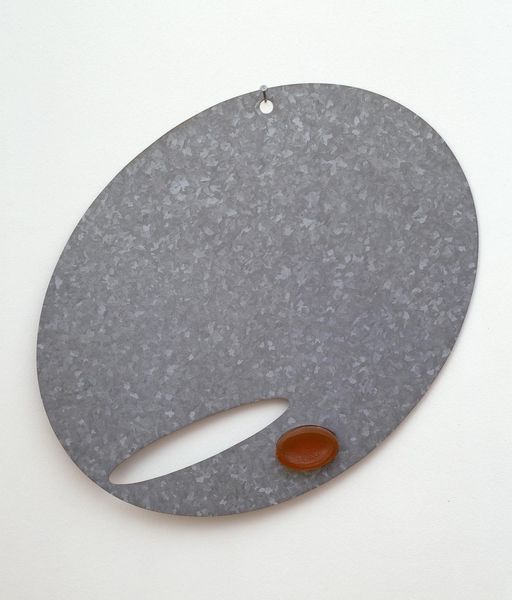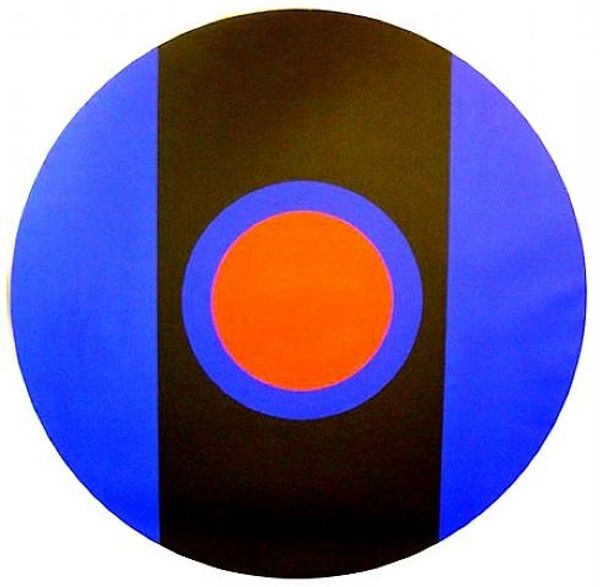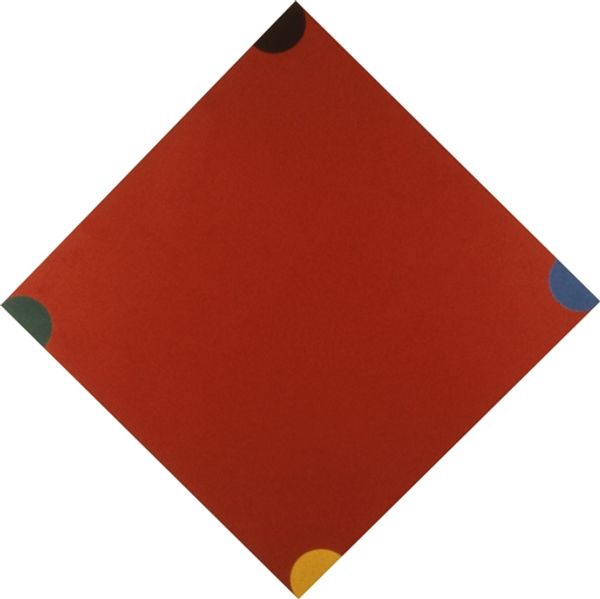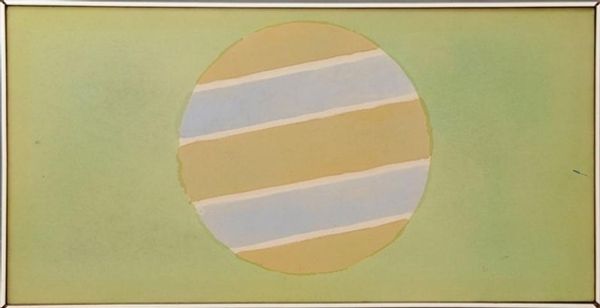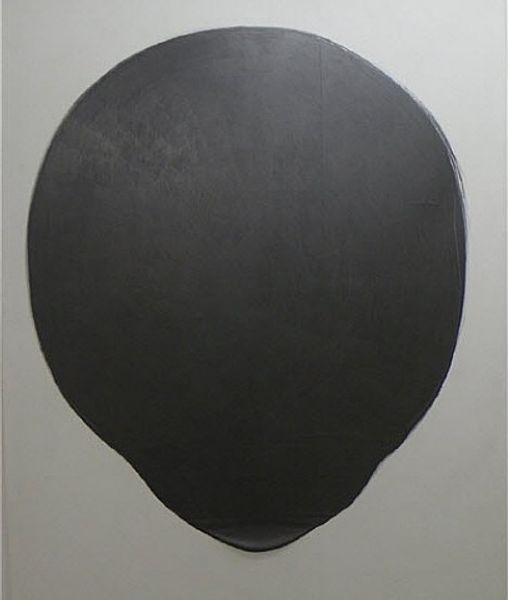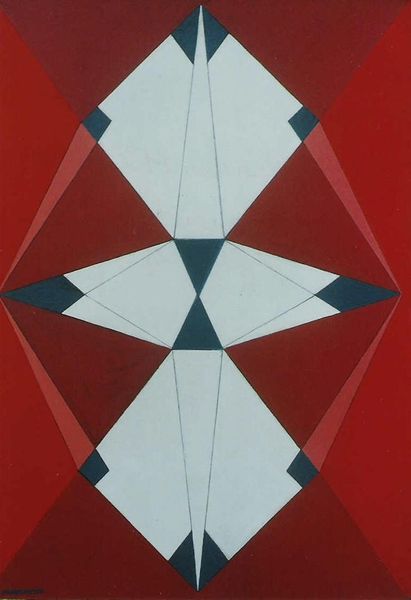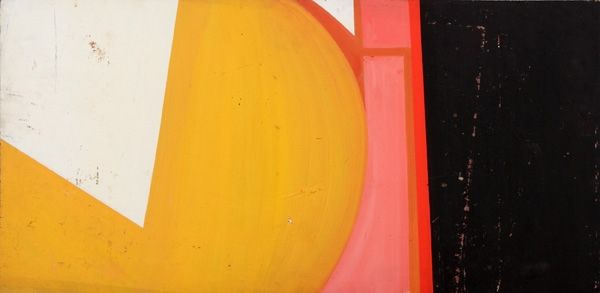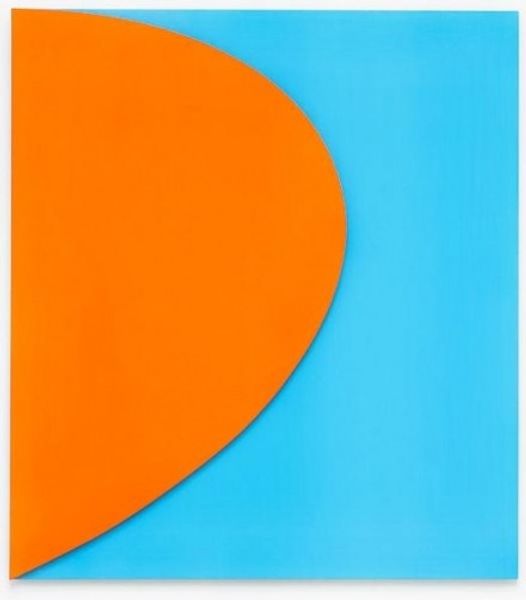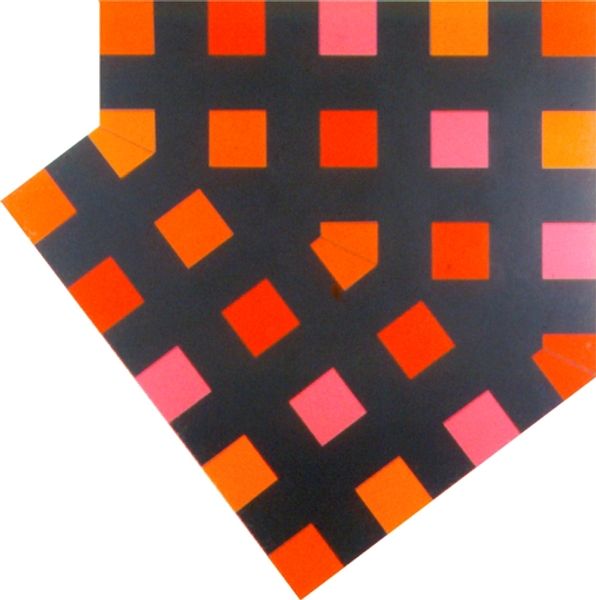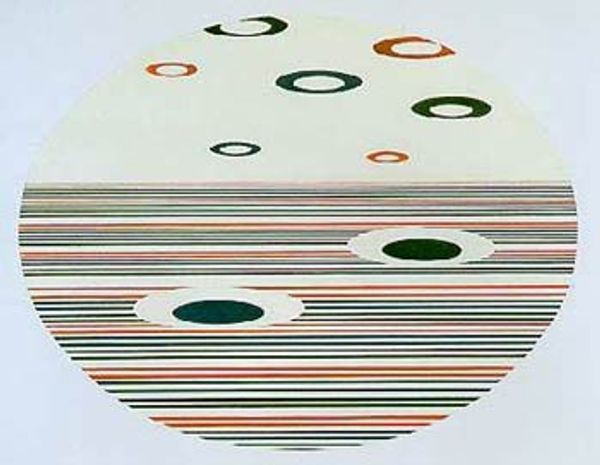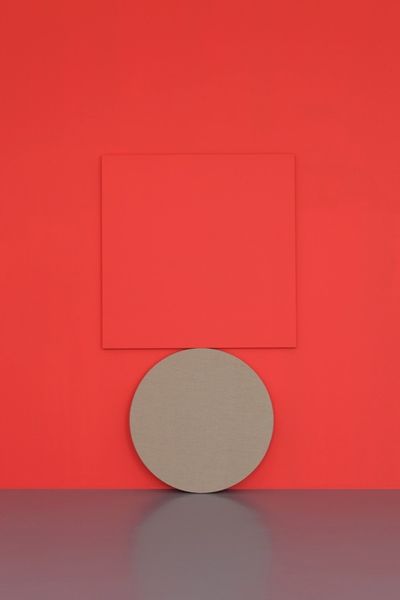
oil-paint
#
oil-paint
#
circle
#
form
#
geometric
#
abstraction
#
line
#
modernism
#
hard-edge-painting
#
orange
Copyright: Alexander Liberman,Fair Use
Editor: This is Alexander Liberman's "Air" from 1962, an oil painting featuring geometric shapes. The large orange circle, sliced by a vibrant green line, with a smaller grey circle below... it almost feels like a cosmic body. What do you see in this piece? Curator: Well, beyond the formal elements, consider the socio-political climate of 1962. This was the height of the Cold War, a period defined by division and the ever-present threat of nuclear annihilation. How might Liberman's stark geometric forms—particularly that bold line bisecting the orange circle—reflect that societal tension, that sense of fragmentation and unease? Editor: So, the line isn't just a design element, but perhaps a symbol of division? The color choices feel deliberate, then. Curator: Precisely! The vibrant orange could represent energy, vitality, or even warning. The gray circle...does that evoke a sense of neutrality, a passive observation? How does its placement within this energetic field change how you perceive it? Think about the hard-edge painting movement in the context of Abstract Expressionism. Editor: It's interesting, the gray feels almost like a counterpoint to all that energy, maybe even vulnerability? I didn't consider the social context at all before, I was only looking at shapes and colors. Curator: Exactly, it’s not merely about aesthetics; it is a cultural document. How do these colors make you feel and what systems or groups do these colors connect to historically? What new ideas does the piece reveal now that it is not in 1962? Editor: This has really broadened my understanding! I am also more aware now that hard-edge isn't completely separate from the culture it exists in. Curator: I agree; situating artwork in history generates meaning far beyond the visual alone.
Comments
No comments
Be the first to comment and join the conversation on the ultimate creative platform.
